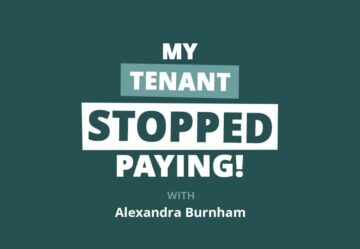Median asking rents are beginning to dip in many markets, according to new data from Redfin, a turnaround from the skyrocketing rent prices observed last spring. The median national asking rent fell to $1,937 in March, a 0.4% year-over-year decline. Median asking rent prices are lower than they’ve been in over a year, and the days of bidding wars for an apartment are coming to an end in many markets. It’s indicative of a correction from overinflated rent prices that resulted in part from a pandemic-driven demand for more space. But rents are still about 20% higher than they were when the pandemic began.
Why Are Rent Prices Cooling?
From the supply side, new housing construction has finally caught up to pandemic demand. In 2022, there were more multifamily housing starts with five units or more than in any year since 1986, according to Census Bureau data. And the number of completed multifamily buildings with five units or more surged 72% in February, reaching one of the highest levels in decades.
Rental demand is also waning. Due to rapidly-rising rent prices in 2022 and fears of an upcoming recession, renters are discouraged from moving and incentivized to stay in their current leases. And housing affordability issues are causing more older folks to move in with their adult children, even before their health declines. More young people are renting with roommates and parents as well. These factors are causing rental vacancy rates to rise, returning to their long-term average.
The short-term rental market paints a similar picture—investors rushed to meet the demand for vacation rentals during the pandemic, and the surplus of properties is leading to increased vacancy rates. That’s true even as demand remains surprisingly strong amid inflation-strained budgets and recession fears.
Where Are Rent Prices Falling the Most?
- Austin, Texas (-11%)
- Chicago, Illinois (-9.2%)
- New Orleans, Louisiana (-3%)
- Birmingham, Alabama (-2.9%)
- Cincinnati, Ohio (-2.9%)
- Sacramento, California (-2.8%)
- Las Vegas, Nevada (-2.4%)
- Atlanta, Georgia (-2.3%)
- Phoenix, Arizona (-2.1%)
- Baltimore, Maryland (-2%)
The largest declines in median asking rent prices were in Austin, where asking rents dropped 11%, and Chicago, where asking rents dropped 9.2% from the previous year. Last May, Austin had the highest year-over-year increase in rent prices, at 48%, according to Redfin data. This was a result of tech companies relocating to the area and attracting new high-earning residents at a time when mortgage rates were increasing. In the second quarter of 2022, lead data began to show renters looking to move out of Austin. Now, rent prices are normalizing in the city due to curbed demand.
Cincinnati saw a similarly significant year-over-year rent increase last May, so rents are normalizing there as well. In Chicago, the rental supply increased during the pandemic as new landlords tried to cash in on high rents, and many chose to rent rather than sell at the tail end as homebuying demand decreased, according to Chicago Redfin real estate agent Dan Close.
Where Are Rents Rising?
- Raleigh, North Carolina (16.6%)
- Cleveland, Ohio (15.3%)
- Charlotte, North Carolina (13%)
- Indianapolis, Indiana (10.5%)
- Nashville, Tennessee (9.6%)
- Columbus, Ohio (9.4%)
- Kansas City, Missouri (8.1%)
- Riverside, California (7.2%)
- Denver, Colorado (7%)
- St. Louis, Missouri (4.2%)
In some metros, rents just keep rising, but even the 16.6% year-over-year growth in asking rent in Raleigh doesn’t come close to the increases shown in last year’s data. A thriving tech scene in cities like Raleigh, Charlotte, and Nashville continues to bring new residents in droves, keeping rent prices inflated even as new residential buildings are erected.
At the same time, high home prices and rising interest rates turned many would-be homebuyers into renters. For example, in Denver, skyrocketing home prices in recent years have led to a growing group of high-income renters who were priced out of homeownership.
Jennifer Bowers, a Redfin real estate agent in Nashville, says asking rents are also rising in the city because a huge influx of investors bought properties in the area. This contributed to soaring demand by increasing the competition for starter homes, thereby making it possible for investors to charge top-dollar rents. Investors accounted for 26% of home sales in Tennessee during 2021, according to Pew Research.
What This Means for Investors
This data doesn’t necessarily mean that investors should flock to multifamily investment opportunities in cities like Raleigh and Cleveland. After all, imagine if you had bought a home in Austin last March in an attempt to capture high rents up 38% year-over-year. A year later, you’d be lowering your asking rent and waiting for an average 16.3% decline in year-over-year home values to turn around.
Thinking one step ahead could yield better results. If you can find a market where home values are still relatively low, and rent prices are likely to rise due to projected job growth in the area or overflow from nearby hubs, you’ll be in a better position to reap the rewards of local rent increases.
Still, there’s no crystal ball foretelling the perfect strategy. Real estate and rent prices will always fluctuate, though some markets are more stable than others. Maintaining flexibility and having patience may serve you even better than nailing the perfect timing for your purchase.
Find an Agent in Minutes
Match with an investor-friendly agent who can help you find, analyze, and close your next deal.
Note By BiggerPockets: These are opinions written by the author and do not necessarily represent the opinions of BiggerPockets.
- SEO Powered Content & PR Distribution. Get Amplified Today.
- Platoblockchain. Web3 Metaverse Intelligence. Knowledge Amplified. Access Here.
- Minting the Future w Adryenn Ashley. Access Here.
- Source: https://www.biggerpockets.com/blog/10-markets-where-rent-is-falling
- :has
- :is
- :not
- $UP
- 10
- 2%
- 2021
- 2022
- 7
- 8
- 9
- a
- About
- According
- Adult
- After
- Agent
- ahead
- Alabama
- All
- also
- always
- Amid
- an
- analyze
- and
- any
- Apartment
- ARE
- AREA
- arizona
- around
- AS
- At
- attracting
- austin
- author
- average
- ball
- BE
- because
- been
- before
- began
- Beginning
- Better
- better position
- Block
- border
- bought
- bring
- Budgets
- Bureau
- but
- by
- california
- CAN
- capture
- Cash
- caught
- causing
- Census
- charge
- Charlotte
- chicago
- Children
- chose
- Cities
- City
- cleveland
- Close
- Colorado
- come
- coming
- Companies
- competition
- Completed
- construction
- continues
- contributed
- could
- Crystal
- Current
- data
- Days
- deal
- decades
- Decline
- Declines
- Demand
- Denver
- Dip
- discouraged
- Doesn’t
- dropped
- during
- estate
- Even
- example
- factors
- Falling
- fears
- February
- Finally
- Find
- First
- Flexibility
- fluctuate
- For
- For Investors
- foretelling
- from
- Georgia
- Group
- Growth
- harvard
- Have
- having
- Health
- help
- Hidden
- High
- higher
- highest
- Home
- Homes
- housing
- HTML
- HTTPS
- huge
- illinois
- imagine
- in
- incentivized
- Increase
- increased
- Increases
- increasing
- Indiana
- influx
- interest
- Interest Rates
- into
- investment
- investment opportunities
- Investors
- issues
- IT
- Job
- just
- Keep
- keeping
- largest
- Last
- leading
- Led
- levels
- LG
- like
- likely
- local
- long-term
- looking
- Louis
- Louisiana
- Low
- lowering
- Making
- many
- March
- Market
- Markets
- Maryland
- May..
- means
- Meet
- more
- Mortgage
- most
- move
- moving
- Nashville
- National
- necessarily
- NEVADA
- New
- next
- North
- north carolina
- now
- number
- of
- Ohio
- on
- ONE
- Opinions
- opportunities
- or
- Others
- over
- pandemic
- parents
- part
- Patience
- People
- perfect
- plato
- Plato Data Intelligence
- PlatoData
- position
- possible
- previous
- Prices
- projected
- properties
- purchase
- Quarter
- quickest
- raleigh
- Rates
- rather
- reaching
- real
- real estate
- recent
- recession
- Redfin
- relatively
- Rent
- rentals
- renters
- represent
- residential
- residents
- result
- Results
- returning
- Rewards
- Rise
- rising
- round
- sales
- same
- says
- scene
- Second
- second quarter
- sell
- serve
- should
- show
- shown
- significant
- similar
- Similarly
- since
- So
- soaring
- some
- Space
- spring
- stable
- starts
- stay
- Step
- Still
- Strategy
- supply
- Surged
- surplus
- tech
- tech companies
- texas
- than
- that
- The
- The Area
- their
- There.
- thereby
- These
- they
- this
- thriving
- time
- timing
- to
- true
- TURN
- Turned
- units
- upcoming
- vacation
- Values
- VEGAS
- Waiting
- was
- webp
- WELL
- were
- WHO
- will
- with
- written
- WSJ
- year
- years
- Yield
- you
- young
- Your
- zephyrnet













